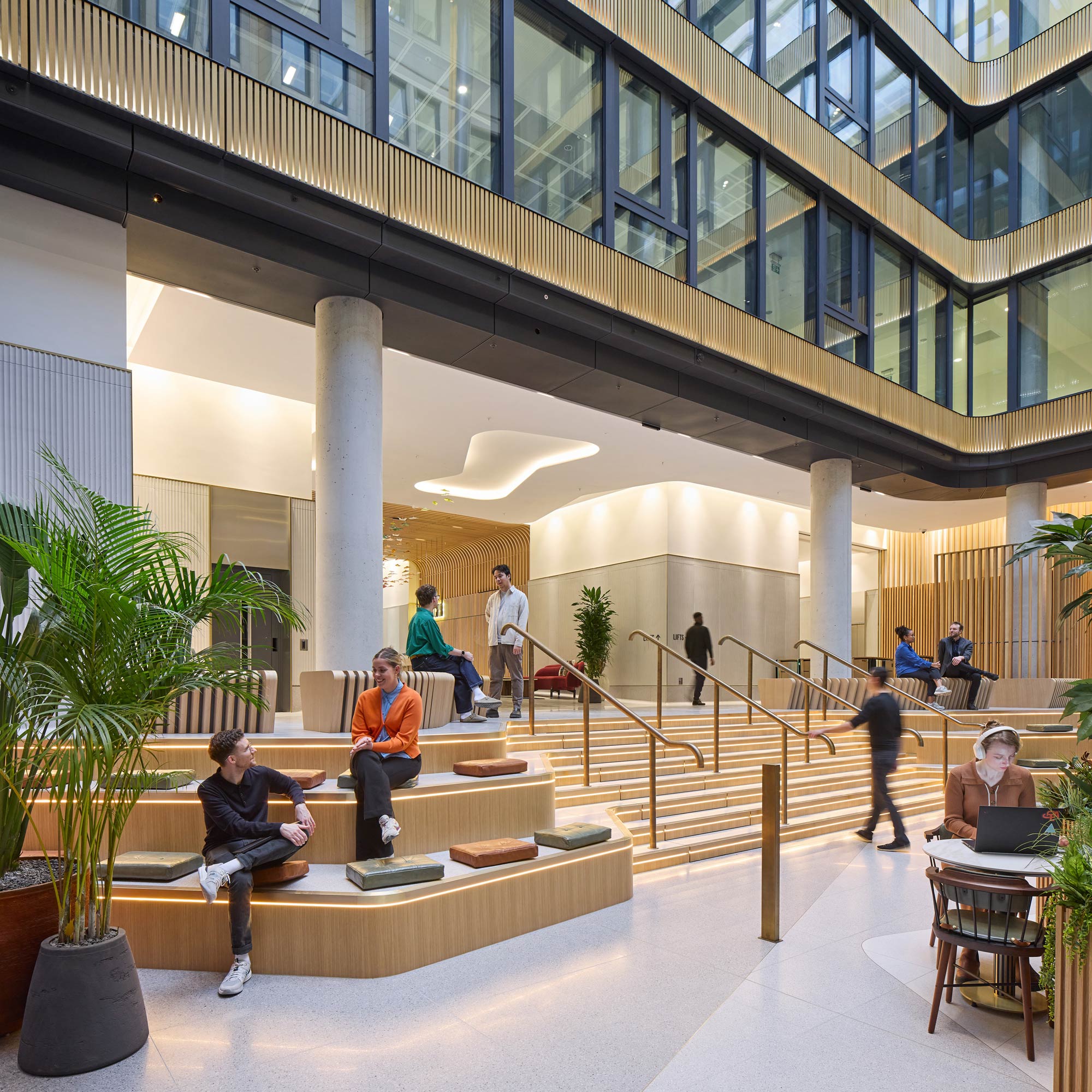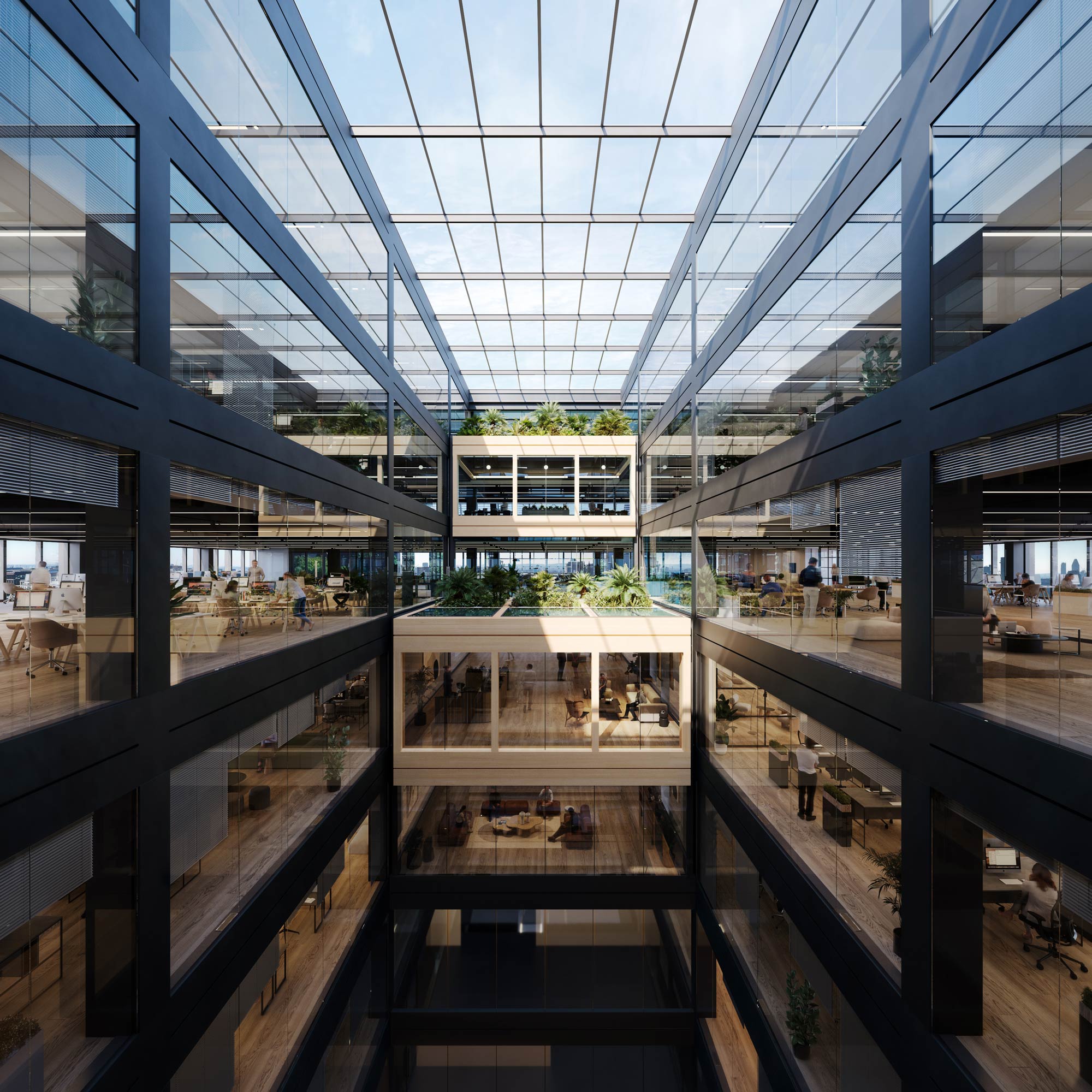How London’s Green Real Estate Can Lead the Global Climate Agenda
June 20, 2025 | By Juliette Morgan, Astrid Hugo
2025 has brought with it new realities. From geopolitical tension to the unrelenting pressure of climate impacts – wildfires in Canada and Los Angeles, floods in Spain and France, landslides in Switzerland – the interconnectedness of our crises is impossible to ignore. A little-discussed fact is the climate impact of conflict. Militaries account for 5.5% of global emissions, and impacts from the Ukraine war have exceeded 230 megatons of CO2. Despite global decarbonisation efforts, emissions continue to rise. But the UK is, quietly and steadily, reducing its carbon footprint – progress often overlooked amid headlines of despair.
In this uneasy context, it can feel like the importance of climate action has fallen down the agenda, whilst the climate and adaptation challenges haven’t gone away. If anything, this should mean that investments into adaptation and resilience will increase at the asset and government level over time. For London, green real estate has never mattered more.
Why Climate Action Still Matters – Especially Now
Support for net-zero initiatives may fluctuate, but the long-term trajectory is set. Property owners and occupiers are still pursuing high environmental performance as a core strategy for leasing, resilience, risk reduction, and capital alignment. Resilience and wellness frameworks – including LEED, BREEAM, NABERS, WELL, Fitwel, and ILFI – offer a common language to benchmark value and accountability.
One of the clearest ways the built environment can demonstrate a commitment to climate action is through the application of a Life Cycle Assessment (LCA). This enables a full view of carbon impacts – operational and embodied – and informs decisions on offset purchases and materials reuse. Offsets can take the form of nature-based solution credits, such as tree planting. However, it is up to the purchaser to choose between avoidance credits (which prevent emissions from occurring, e.g. through renewable energy projects) and absorption credits (which actively remove carbon from the atmosphere, such as reforestation or soil sequestration). In an age where emissions must be counted as carefully as costs, this is no longer optional.
London tenants are already responding to these signals. In 2023, more than 40% of office leases were signed in EPC A or B-rated buildings, up from just 21% in 2018. These greener buildings also attract longer commitments, with EPC A-rated offices averaging lease lengths of 8.9 years, compared to 6.7 years for lower-rated spaces.
Designing With Nature, Not Against It
There is growing recognition that nature and ecosystems play a vital role in tackling climate change – a role now gaining prominence through mechanisms like nature-based credits, biodiversity net gain, and urban greening factor requirements. In London, a strategic plan for biodiversity corridors is enabling species to move and thrive alongside human activity, with 42km of green routes designed to support ecological resilience in the city. While carbon offsetting is important, it’s largely nature that does the heavy lifting when it comes to absorbing emissions. Yet we are facing a biodiversity crisis, and the natural systems we depend on are under unprecedented pressure.
Put simply, without direct investment in nature, carbon offsetting alone will not be enough. That’s why policies like biodiversity net gain – which require developments to leave the natural environment in a measurably better state – are increasingly shaping design and planning decisions.
Making Retrofit the Rule, Not the Exception
In London, supportive policy levers are making the city an increasingly attractive destination for green real estate investment. A growing emphasis on retrofit-first is breathing new life into underused buildings, extending their carbon life and avoiding the environmental cost of demolition and rebuild. This shift brings new opportunities – and challenges. Architects must now take a forensic approach to understanding the existing shell and core, unlocking creative potential within the constraints of what’s already there. Fit-outs, meanwhile, need to adopt circular economy principles, designing for longevity, flexibility, and material reuse – and not just at end of life, but at beginning of life. There is an array of beautiful, reclaimed materials that can be used in fit-out today – from insulation made of ocean recovered plastic, to net zero carpet, to wool, felt, timber, cork, and stone applications in interior design.
At Gensler, we believe the most sustainable building is the one that already exists. That belief underpins our collaboration with Opportunity London on the Retrofit at Scale guide, a practical roadmap identifying five key pillars to unlock retrofit opportunities, including: aligning tax and planning incentives, redefining value, embedding circularity, and investing in the skills and infrastructure needed to scale reuse.

We’re already seeing this thinking play out in practice. The Acre, in Covent Garden, and 10 Gresham Street, near St Paul’s, are two standout examples that show how a retrofit-first approach can achieve outstanding environmental and commercial outcomes.
At The Acre, a closed-off 1980s bank was transformed into a vibrant, community-focused workplace. By retaining 80% of its original structure and reorienting the building to connect with its surroundings, the team saved over 4,000 tonnes of CO₂ and unlocked some of Covent Garden’s largest open office floorplates. With targets including BREEAM Outstanding, WELL Platinum, Fitwel 3-Star, and a 4.5-star NABERS UK rating, the project exemplifies how retrofit can deliver environmental impact without compromising commercial appeal or design quality.

Meanwhile, at 10 Gresham Street, Gensler’s repositioning of a prominent City building delivered a 67% reduction in embodied carbon compared to the RIBA 2030 Climate Challenge target, with a measured result of just 250 kg CO₂/m², by retaining the existing structure. Entirely powered by electric energy, the building combines smart systems that reduce operational carbon by 72%, with AirRated Platinum air quality, ActiveScore Platinum active travel provision, and a biodiverse rooftop designed for pollinators, birds, and bats. Also aiming for BREEAM Outstanding and WELL Core Platinum, these buildings are reshaping the market by demonstrating what’s possible when bold retrofit strategy meets thoughtful design.

It’s not just about environmental performance – these assets are proving resilient in the market. According to JLL, tenants in London are willing to pay an average of 11% more for green-certified office space. And as of Q1 2025, there is more than 12 million square feet of active office requirements in the London market, which is the highest demand level we’ve seen in over a decade.
This industry momentum is now being reinforced by regulatory progress. The introduction of Part Z marks a major step forward in addressing embodied carbon. By consolidating guidance from LETI, RIBA, and BCO, the new framework establishes a more unified, performance-driven approach to whole-life carbon assessment, sending a clear signal that all projects must be accountable for what they emit across their lifespan.
Combined with clearer policy, carbon accounting, and mounting investor pressure, this is reshaping the market. Despite wider economic headwinds, green real estate with proven sustainability and ethical standards is becoming more attractive than ever. Europe and the UK are firmly back on the radar for global investors, particularly when retrofit-first strategies offer both carbon and commercial returns.
Defining the Future
Today’s occupiers are more demanding – and rightly so. They want buildings that work for people and planet. Wellness features, natural light, clean air, green access, and transport connectivity are no longer “nice-to-haves” but minimum expectations. 10 Gresham Street features AirRated Platinum indoor air quality, ActiveScore Platinum cycling provision, and biophilic interiors that enhance mental wellbeing. Major landlords across the city are recognising that a building’s sustainability credentials, alongside connectivity, are now decisive factors in attracting and retaining tenants.
Green real estate is fast becoming a strategic asset, shaping how organisations attract talent, build culture, and demonstrate their values. In a moment of global flux, London has a generational opportunity to define what a resilient, decarbonised urban future looks like. The tools, talent, and case studies to prove that it can be done all exist – we just need to embrace it.
For media inquiries, email .

